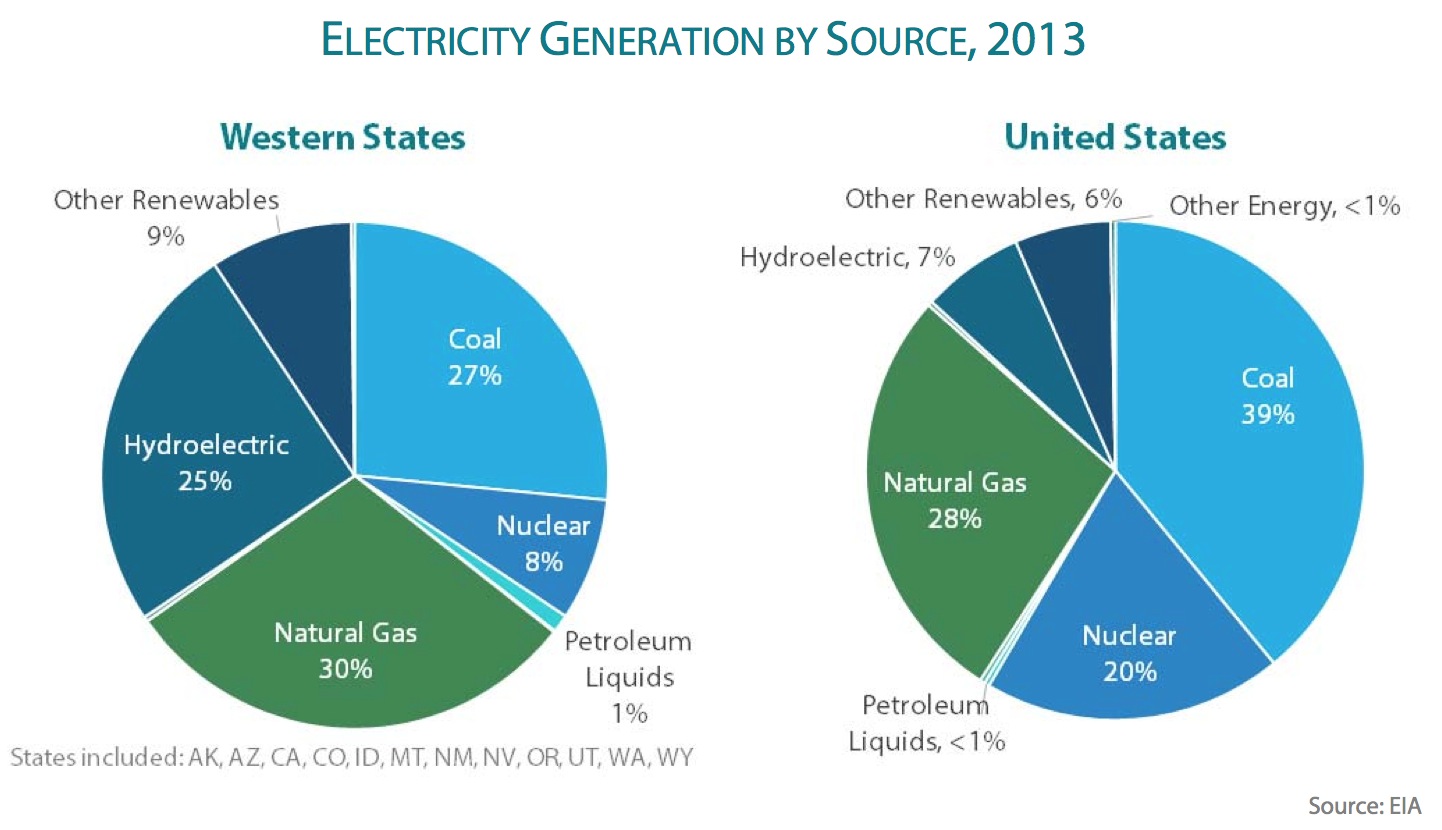AMERICAN COUNCIL ON RENEWABLE ENERGY
Executive Summary
What’s New in the West in 2014:
Growth of Renewable Energy: With the growing prominence of renewable energy in the western
power, heat, and transportation sectors, states are implementing and exploring technology and policy
options to effectively manage its production and use. Renewable energy is now responsible for over
20% of electricity generation in six western states, and the region saw the addition of nearly 4 GW of
new renewable energy capacity in 2013 alone – which is more than two thirds of total 2013 U.S.
capacity additions.
However, a battle is brewing among private-sector developers and their utilities over net metering.
States are reevaluating the costs and benefits of their net metering policies, which may result in new
rules for the utility purchase of distributed energy. Arizona’s recently imposed charge to net-metered
systems has already resulted in a decline of new residential solar in 2014. In parallel, states have also
begun to expand their net metering policies to support community-owned distributed generation
systems and increase the penetration of renewables on the grid. The industry will closely monitor
changes added to net metering rules in the coming months and their potential implications for the
sector.
Carbon Reductions: The U.S. Environmental Protection Agency (EPA)’s proposal to cut carbon dioxide
pollutants from power plants will have a significant effect on western states’ energy sectors, further
increasing the role of renewable energy in the region’s overall power mix. The EPA plan complements
the Pacific Coast Action Plan on Climate and Energy, a regional pact among Washington, California,
Oregon, and British Columbia to reduce greenhouse gases and promote clean energy, and may also
encourage additional multi-state collaboration and action on climate. Some states have already made
significant progress in decarbonizing their power sectors; Nevada saw a 33% reduction in carbon
dioxide emissions between 2005 and 2011 by reducing its use of coal while increasing solar and
geothermal, but must continue to deploy renewable energy to meet its EPA target.
Water-Energy Nexus: Water resources are becoming increasingly scarce in the Western Region.
According to a University of California Davis study, the 2014 drought in California will result in an
economic cost of $2.2 billion and the loss of 17,100 agricultural jobs. Many renewable technologies
demonstrate tremendous water savings compared to traditional power plants, and are a technology of
choice to help reduce future water consumption. New renewable energy projects in the West are
incorporating additional water-savings technologies, such as the 392 MW Ivanpah solar thermal electric
project commissioned in February 2014, which uses dry-cooling technology to significantly reduce its
water demand. ACORE suggests that the costs associated with water, like the costs of carbon, should be
included in the computation for the all-in cost of power.
The western United States’ remarkable renewable energy resource availability, supportive policies, and well- developed supply chains have transformed western states into national leaders in renewable energy development. In 2013, the region attracted over a third of the country’s combined venture capital, private equity and asset finance investment in the renewable energy sector, and produced approximately 34% of its total electricity generation from renewable energy sources – compared to roughly 13% nationally (sources: Bloomberg New Energy Finance (BNEF) and Energy Information Administration (EIA)).
Download full version (PDF): Renewable Energy in the 50 States, Western Region
About the American Council on Renewable Energy
acore.org
ACORE, a 501(c)(3) non-profit membership organization, is dedicated to building a secure and prosperous America with clean, renewable energy. ACORE seeks to advance renewable energy through finance, policy, technology, and market development and is concentrating its member focus in 2014 on National Defense & Security, Power Generation & Infrastructure, Transportation, and International Initiatives. Additional information is available at www.acore.org.
Tags: ACORE, American Council on Renewable Energy, Solar Energy, Wind Energy







 RSS Feed
RSS Feed